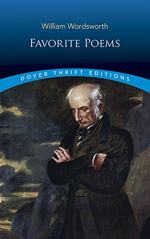
|
| Name: _________________________ | Period: ___________________ |
This test consists of 15 multiple choice questions and 5 short answer questions.
Multiple Choice Questions
1. Which is the best interpretation of line 6's reference to "a melancholy strain"?
(a) A sad song.
(b) Hard work.
(c) Persistent pain.
(d) A difficult burden.
2. What is the stanzaic form of "The Solitary Reaper"?
(a) Octet.
(b) Octave.
(c) Ballade.
(d) Ottava rima.
3. The characterization of the woman as a "Highland Lass" indicates that she is a young woman from what area?
(a) Ireland.
(b) Wales.
(c) The Hebrides.
(d) Scotland.
4. Which stanza could be reasonably called the most positive in tone?
(a) The fourth.
(b) The second.
(c) The first.
(d) The third.
5. What is the "sickle" in line 28?
(a) A tied sheaf of grain.
(b) A sharp cutting tool.
(c) A mark dyed into wool to track sheep.
(d) A handle used to pull a cart.
6. Which of the following most clearly communicates the speaker's admiration for the reaper's singing ability?
(a) The poem's nature imagery.
(b) The repeated use of exclamation points.
(c) The metaphors in the second stanza.
(d) The poem's elevated diction.
7. What is the meaning of the word "Yon" in line 2, "Yon solitary Highland Lass"?
(a) You.
(b) Nearby, this one.
(c) My.
(d) Over there, that one.
8. Which line uses deliberate redundancy for emphasis?
(a) "Behold her, single in the field" (line 1).
(b) "Stop here, or gently pass" (line 4).
(c) "I listened, motionless and still" (line 29).
(d) "For old, unhappy, far-off things" (line 19).
9. What technique is evident in the line "Breaking the silence of the seas" (line 15)?
(a) Sibilance.
(b) Synesthesia.
(c) Onomatopoeia.
(d) Aphorismus.
10. Who is the author of "The Solitary Reaper"?
(a) William Wordsworth.
(b) Percy Shelley.
(c) William Blake.
(d) John Keats.
11. What technique is evident in the poem's opening line, "Behold her, single in the field" (line 1)?
(a) Analogy.
(b) Apology.
(c) Allusion.
(d) Apostrophe.
12. In the fourth stanza, when the speaker finally places himself in the scene, what is it clear he is there to do?
(a) He is out walking.
(b) He is working on a farm.
(c) He is delivering supplies.
(d) He is there to confess his love for the woman.
13. How does line 3, "Reaping and singing by herself," interrupt the poem's dominant metrical pattern?
(a) It ends with a spondee.
(b) It begins with a trochee.
(c) It begins with a spondee.
(d) It ends with a trochee.
14. What technique is used in phrases like "the Vale profound" (line 7) and "A voice so thrilling ne'er was heard" (line 13)?
(a) Imagery.
(b) Simile.
(c) Inversion.
(d) Symbolism.
15. In which stanza does the speaker make it clear that this event happened some time in the past?
(a) The second.
(b) The first.
(c) The fourth.
(d) The third.
Short Answer Questions
1. What technique is used in the line "A voice so thrilling ne'er was heard" (line 13)?
2. What is the young woman doing in the field?
3. In the lines "Perhaps the plaintive numbers flow / For old, unhappy, far-off things," what does "plaintive numbers" refer to (lines 18-19)?
4. What do the metaphors in lines 9-12 and 13-16 have in common?
5. What reasonable inference can be made about the reaper from line 17, "Will no one tell me what she sings?"?
|
This section contains 578 words (approx. 2 pages at 300 words per page) |

|




